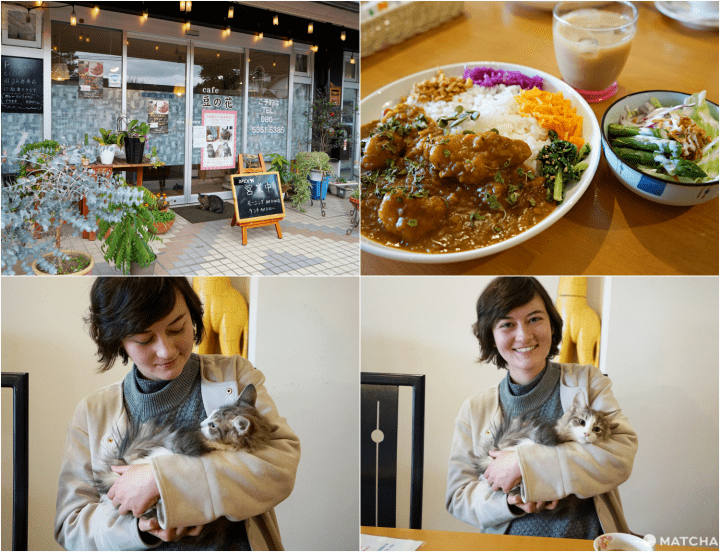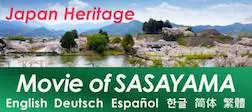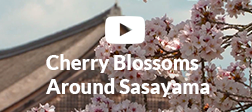Tamba Sasayama - Three Days of Historic Townscapes, Nature, and Traditional Arts

Around one hour from Kyoto and Osaka, Tamba Sasayama contains rich history as a castle town, some of the oldest traditions of pottery artistry in Japan, and gorgeous outdoors. Home to multiple nationally-designated heritage sites and customs, a trip to Tamba Sasayama reveals a delightfully relaxed side of Japan that all travelers can enjoy.
It is recommended to spend three days here to take advantage of what this hidden gem has to offer, from Sasayama Castle and serene rice fields to the internationally-renowned Tamba ware. Continue reading for a suggested trip itinerary and place to visit.
Table of Contents
Day 1: Take in the Great Outdoors in Fukusumi
Day 2: Encounter Tamba Sasayama's History
Day 3: See, Learn, and Make Tamba Pottery
Transportation to and Around Tamba Sasayama
Day 1: Take in the Great Outdoors in Fukusumi

Start the first day in Tamba Sasayama by enjoying the gorgeous nature of Fukusumi, a charming area with Edo-era buildings, where travelers stopped overnight between Kyoto and Sasayama Castle. Today, visitors can see the remaining townscape, surrounded by lush green fields and hills as far as the eye can see. A number of small, independent businesses, including guest houses, are also in Fukusumi.
Breakfast and Bike Riding

If you'll be arriving in the morning, stop by Magnum Coffee for a morning pick-me-up. Magnum is a cafe located in a renovated playhouse known for its delicious drinks and treats. The cafe owner is passionate about serving organic, high-quality coffee and food. Get ready for the day with a plate of homemade French toast and an adorable latte.

One of the best ways to explore Fukusumi is on a bicycle. GreenCrossRoad offers tours of the area, guided by the friendly Mr. Murakami, a Tamba Sasayama native passionate about everything bicycle-related. Meet at GreenCrossRoad, located in a 300-year-old traditional house, first to get your equipment and bike.
We rode all around Fukusumi while Mr. Murakami offered guidance about the town and its history. We asked to go somewhere with a view, so we biked up to Sasayama Forest Park. The path is hilly but not too difficult for beginners.
Lunch, Shopping, and a Shrine Visit

Lunch is at Mame no Hana, a cafe specializing in curry. The restaurant is charming and the dishes are full of flavor. There are also adorable kittens, which the owners breed and sell.
After lunch, browse the shops and cafes around Fukusumi. For example, Littleaf (Japanese) sells Tamba Sasayama-made handicrafts, from pottery and lacquerware to aromatherapy.

Another must-see is Sumiyoshi Shrine, a local Shinto shrine with beautiful buildings and landscape. Take in the peaceful environment in the early morning. Be sure to look for the rock garden.
Spend the Night at Aoashi Guesthouse

After a day of exploration, check into Aoashi Guesthouse, a lodging in Fukusumi located in a renovated traditional home. Run by a couple who moved to the area from Ashiya (near Kobe), the house is full of antique touches that they created themselves, refurbished completely from the original home. There is also a gorgeous backyard that overlooks the picturesque fields.
For dinner, you can experience an evening like a local with a homemade meal. Pictured above is Japanese hotpot, which made a simple, but delicious evening.
You can purchase beverages as the guesthouse, including Fukusumi craft beer. Enjoy the warming aroma of black soybeans in the Kuromame Indiana Pale Ale by ZigZag Brewery (Japanese). Black soybeans are famous in Tamba Sasayama, and ZigZag is a local craft brewery located down the street from the guesthouse.
The house is incredibly quiet at night, and the morning view just after sunrise is gorgeous.
Day 2 - Encounter Tamba Sasayama's History

Upper- and lower-left picture courtesy of Sasayama Castle Oshoin
Tamba Sasayama also much to travelers interested in Japanese history. Sasayama Castle and a carefully-preserved downtown area will fascinate and charm all for the day.
Explore Sasayama Castle

Tamba Sasayama is most known for Sasayama Castle, that visitors can see the remains of today. It was constructed to strengthen Tokugawa Ieyasu's presence against Toyotomi Hideyoshi, who was ruling Osaka at the time. The castle was built in 1609, taking less than a year to complete, making it the fastest-constructed castle in Japan.
Sasayama Castle was built without a keep but has a central building, Oshoin (pictured above), which served as the main structure for purposes such as entertaining and meeting nobility.
It takes a little over an hour to tour the castle. There are English explanations of the rooms and structures, making it easy to picture how nobility and people used to live in the Edo Period.
Discover Folk Songs and Local History

After touring the castle, stop by the Tamba Sasayama Dekasho Center, which houses exhibits on the Dekansho Bushi, a folk song and dance performed at the annual Dekansho Festival in August.
The adjacent Aoyama Historical Village is under renovation until March 2020. The completed facilities will allow visitors to learn about Tamba Sasayama's history with the Aoyama clan from Tokyo.
Healthy and Filling Meals at RH Bagels

One of the most unique restaurants in Tamba Sasayama is RH Bagels, located inside a traditional Japanese home. Diners can enjoy voluminous meals from the menu, with bagel sandwiches being a popular choice. Pictured above is the bagel lunch box set (shrimp and guacamole; 1,682 yen without tax), which comes with a generous helping of salad, soup, and sides. Make sure to come with a large appetite.
The interior of the restaurant is very creative, filled with fun, one-of-a-kind decorations. Inquire before you visit about special dietary concerns, like vegetarianism and veganism (it may be difficult to accommodate day-of requests).
Castle Town Strolls

After touring the castle, head to the surrounding town for snacks. Taisho Romankan houses a restaurant, cafe, and shop in a retro, 1920's-style building. We recommend taking a break with kuromame coffee (bottom-left) and browsing the selection of souvenirs.
Tamba Sasayama's castle town area is walkable and full of things to see and do, including shrines. Stop by Kasuga Shrine (bottom-right), famous for its biannual Noh performances. Kasuga Shrine is right in the middle of the castle town.

Ojiyama Makekirai Shrine is within walking distance, too. The shrine's vivid vermillion torii gates will dazzle you, so be sure to take a picture!
Learn at the Old Tamba Pottery Museum

Those wanting to learn about the history of Tamba ware should visit the Old Tamba Pottery Museum. The pieces exhibited here showcase the ceramics through history, including centuries-old pieces from the Heian period (12th century) and thereafter.
Works displayed include everything from works from the late Heian period to the end of the Edo period (19th century). There is a museum shop where you can purchase contemporary pieces.
Tamba ware began as a functional, plain type of pottery with earthy colors, utilizing glazes for hue variation. Towards the Meiji period (1868 - 1912), designs began to become more intricate to fit international tastes, as Japan and its arts drew attention from Europe.
Indulge in Luxurious Dinner and Stay at NIPPONIA

Sasayama Castle Town Hotel NIPPONIA is an upscale lodging facility with several lodging buildings scattered throughout Tamba Sasayama's castle town area. Guests can reserve different rooms, which each have a different theme and design, to ensure a one-of-a-kind experience. Staff can speak English and are happy to accommodate guests' needs.
The room we stayed in was in the historic ONAE building, in the same structure as the restaurant and check-in office. It is luxurious and spacious, with a bedroom and separate tearoom. Small details, such as holes in the wooden panels above the sliding doors, are left untouched, as they were originally.
For dinner, enjoy a course meal at the hotel. Diners can indulge in French cuisine* that utilizes local, seasonal ingredients, allowing guests to experience the best of Tamba Sasayama. Local sake and beverages are also available.
*With advanced notice, Sasayama Castle Town Hotel NIPPONIA can accommodate guests with dietary needs, like vegetarianism and veganism. Be sure to inquire when making a reservation.
Enjoy a Craft Beer at a Nishi BUR, a Local Bar

Down the street from NIPPONIA is Nishimachi BUR, a retro toy shop-turned-bar. The bar offers local craft brews and a daily changing menu, as different chefs operate it daily. Savor a delicious evening drink and feel free to chat with the friendly locals and shop owner.
Day 3 - See, Learn, and Make Tamba Pottery

A nobori gama, or mountainside kiln, used traditionally to bake Tamba ware; experts work the kiln continuously, day and night, for around 3 to 4 days.
Tamba Sasayama is also famous for its traditional crafts––specifically, Tamba ceramics. The earliest Tamba ware dates back to the end of the Heian period (794-1185), making the ceramics methods one of the oldest in Japan. It is certified as a Japan heritage for its cultural and historical significance by the national government.
The third day includes a visit to The Museum of Ceramic Art, Hyogo, seeing Tachikui Sue no Sato, where Tamba ware is sold, and a pottery-throwing lesson. Observing historical pieces, seeing professionals make it today, and trying to create it yourself allows you to experience all parts of this special art.
Enjoy Pottery at The Museum of Ceramic Art, Hyogo

Visitors can begin their journey learning about Tamba aware at The Museum of Ceramic Art, Hyogo. The museum includes a permanent collection of historic pieces, displaying some of the earliest works dating to the Kamakura period, as well as special exhibitions that vary by season.
Like the Old Tamba Pottery Museum, you can see the changes over time in Tamba ware while visiting. Early works were mostly simple and usually jugs or containers for water or storage, but as time progressed, everyday objects, even including tea sets, were created with elaborate designs.
Some English guidance and explanation are provided; be sure to ask for a pamphlet at admission.

For lunch, enjoy pasta and a view of the picture-perfect homes and pottery studios of Sasayama at Kokuzo, the museum restaurant. Pictured above is a basil and pepperoncino-style mushroom and chicken pasta with a side of mentaiko (seasoned pollack roe) toast. The meals and drinks come, of course, on Tamba ware.
Visit Tachikui Sueno Sato and Talented Tambayaki Artists

After the museum, head next door to see more tambayaki at Tachikui Sueno Sato, where works, including everyday-use objects, like dishes and mugs, of around fifty different artists and potters are shown and available for purchase. There is so much variety in style that everyone who visits will find something they like.

If you find a potter whose works you are especially interested in, you can even go to their studio. We visited around four different artisans, skilled in various fields. Pictured above are works from Shinrin Gama Studio (upper left) and Tamba ware planters by Denichi Gama Studio (upper right). On the lower left are playful dishes by Nobuyuki Gama Studio, and gorgeous designs by Tokatsugama Studio are shown on the lower right.
Visiting the studios for yourself will give you more insight into how diverse Tamba ware is, and how much experience the artisans posses to be able to produce such beautiful works.
Learn Tambayaki Yourself

Some potters offer hands-on lessons for making Tamba ware. We tried using a potter's wheel to make a cup at Tokatsugama studio. For those with little experience throwing pottery, the initial feeling of cold clay to your hands may feel startling, but you'll get used to it quickly.
Sueno Sato also offers workshops for making Tamba ware. Please note that it takes around one to two months for the final product to be ready. International shipping may not be available.
Transportation to and Around Tamba Sasayama
Tamba Sasayama is around an hour from Osaka, and around an hour and a half from Kyoto via train. The closest station for those coming from Osaka is JR Sasayamaguchi Station, and JR Sobe Station for those coming from the Kyoto area.
Sightseeing areas in Sasayama are located away from the stations, so take a bus or taxi. Please keep in mind that buses run very infrequently, so it is important to refer to a schedule; consult with the Sasayama Tourism Information Station right outside the ticket gate at Sasayamaguchi Station.
Below are directions for the three-day trip (detailed above) using buses.
Day 1: How to Get to Fukusumi
For those coming from JR Osaka Station, ride the Fukuchiyama Line to JR Sasayamaguchi Station. Get off and take the Shinki bus bound for Fukusumi (around a 37 minute-bus ride). To get to Fukusumi around 8:08, ride the 7:20 departure bus from Sasayamaguchi.
For those coming from Kyoto, ride the San'in Line (bound for Sonobe) from JR Kyoto Station to Sonobe Station (36 minutes). From the west exit of the station, ride the bus to Fukusumi (34 minutes). Take the 6:38 bus, and you will arrive at 7:15.
Day 2: Fukusumi to Sasayama Castle Area
To get from Fukusumi to Sasayama Castle, take the 9:08 bus to arrive at Nikai-machi at 9:42 (total ride 34 minutes).
Day 3: Sasayama Castle Area to Konda
Go to the Sasayama Honmachi bus stop and take the 9:07 departure bus to JR Sasayamaguchi Station. Ride the train bound for Osaka and get off at Aino Station. From Aino Station, ride the bus bound for Kiyomizu and Kiyomizudera. Get off at The Museum of Ceramic Arts, which is in Konda (total ride 1 hour, 28 minutes).
Discover Tamba Sasayama!
Tamba Sasayama is a destination full of things to do and see, from the charming castle area to the idyllic fields of Fukusumi, to gorgeous ceramics and traditional crafts. Take the time to explore a more rural side of Japan that offers so much to travelers.
Read also
Sponsored by Tamba Sasayama City
Main image courtesy of Sasayama Castle Oshoin
Written by Jasmine Ortlieb










